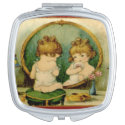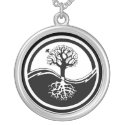This antique carte de visite album was given to my parents by my father's family. It measures 4" wide x 5 1/2" long x 1 1/2" thick. The edges are a shiney gold and it has a metal clasp to secure it. The front of it is slightly stained along the top edge of the front cover and the embossing is slightly damaged. It looks like moisture damage. However, there is no evidence of damage to the inside. The photographs on the inside arein very good condition.
As I mentioned before, there are 19 tintype photographs and 9 carte de visite card-stock photographs. Unfortunately not a single name was included. Possible families are GATES, HULL, ROOT, MILLER OR BEEGHLY.
Yes, this is my Album.
But learn ere you look,
That all are expected
To add to my Book.
You are welcome to quiz it
The Penalty is,
That you add your own Portrait
For others to quiz.
As this poem reveals, family and friends were expected to join in and exchange their carte de visite photographs. This hobby was so popular at the time, it was know as "carte mania."
The first process for photography was invented in Germany in 1839 and is credited to Louis Jacques Mande Daguerre. The process bears his name daguerreotype. This process used glass plates.
About fifteen years later the next advancement in the process was made in France in 1853. It was patented in the United States in 1856. First called melainotype, and then ferrotype, in the United Kingdom, and finally became commonly known as the tintype. There were special multi-lens cameras manufactured to product the tintype. Portrait photography became very popular during the Civil War.
Later a process was invented in France for producing the photographs on cardstock. The paper/cardstock photographs evolved into the carte de visite photographs. The backside of the first photographs were blank. However, it didn't take long for the photographers to realize the backside was the perfect place for their logo. The earliest were stamped simply with the name of the portrait photographer. Then the backside became a work of art in itself, with some beautiful designs.
J. M. WINN
Photographer
Negatives Preserved
No. 28 Union Block
Ottumwa, Iowa
A collection of antique multi-lens cameras and tintypes can be found at Marcel Safier of Australia Use the links on his site to see all that he has available in his collection. An educational and interesting site. Worth a visit.

























